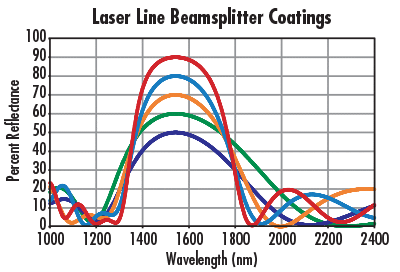Notch Optics produces a wide variety of precision mirrors, including parabolic, spherical, and flat types, utilizing different substrate materials. These mirrors are available with an assortment of metallic and dielectric coatings to meet diverse application needs. Metallic mirror coatings are specifically optimized for various regions of the spectrum, covering wavelengths from 120nm to beyond 10μm. The standard metallic coatings offered include Protected Aluminum, Enhanced Aluminum, UV Enhanced Aluminum, DUV Enhanced Aluminum, Bare Gold, Protected Gold, and Protected Silver.
For visible light applications, Protected Aluminum and Enhanced Aluminum are commonly used, while UV and DUV Enhanced Aluminum are suitable for both UV and visible wavelengths. Bare or Protected Gold coatings deliver high reflectance in the near-Infrared (NIR) and Infrared regions, and Protected Silver provides the highest reflectance between 500–800nm while also performing well in the NIR and Infrared ranges.
Overview of First Surface and Second Surface Mirrors
All mirrors provided by Notch Optics are first surface mirrors, where a high-reflectance coating is applied to the front surface of glass, metal, or semiconductor substrates. These mirrors are ideal for precision optics applications due to their superior reflectance and minimal optical distortions (Figure 1).
In contrast, second surface mirrors feature a coating on the back side of a transparent substrate, with light passing through the substrate before reflecting off the coated surface (Figure 2). While this configuration protects the coating from scratches and oxidation, it introduces several drawbacks that make it unsuitable for most precision optics uses:
- Light passing through the substrate can experience chromatic dispersion.
- Reflections at the substrate interface can cause ghost images, as shown by the dashed orange line, with additional reflections reducing the mirror’s net reflectance. Stray reflections may also occur as light bounces between the coated and uncoated surfaces of the substrate.
These factors significantly limit the performance of second surface mirrors in high-precision optical applications.
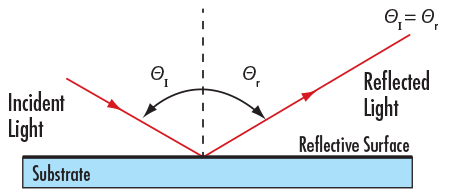
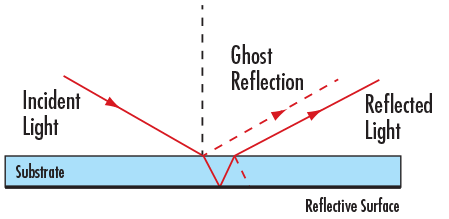
What is an Enhanced or Protected Metal Coating?
Metal coatings, in their unprotected state, are quite delicate and require careful handling and cleaning. An unprotected metal coating’s surface should only be touched or cleaned using clean, dry air to avoid damage.
To improve durability and make the coating more robust, a dielectric overcoat is applied to metallic mirrors. This protective layer not only allows for easier handling and increases the coating’s resistance to damage and oxidation but also maintains the coating’s original performance. In some cases, the dielectric layer can be engineered to enhance reflectance in specific spectral regions.
For cleaning protected metal-coated mirrors, isopropyl alcohol or acetone can be safely used. Additional guidance on mirror coating selection is provided in Figure 3 below, and a summary of key parameters can be found in Table 1.
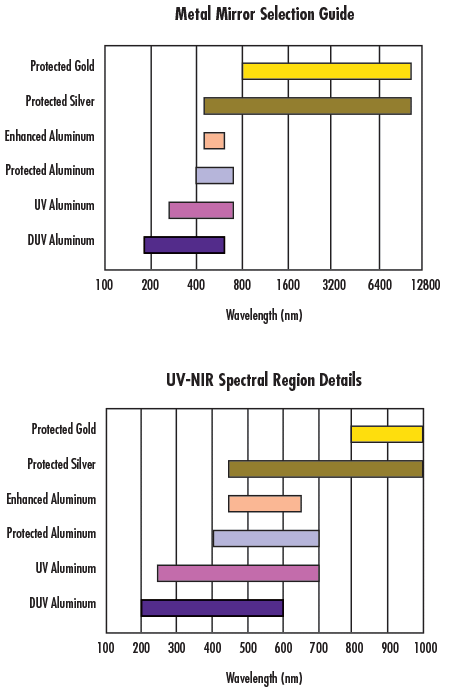
Protected Aluminum
Protected aluminum is the most commonly used mirror coating for visible and near-infrared applications. It features a protective layer of silicon monoxide (SiO) with a thickness of λ/2, which safeguards the delicate aluminum surface. This overcoat enhances the mirror’s durability by providing an abrasion-resistant surface, while still preserving the high reflectance characteristics of the aluminum.
Enhanced Aluminum
The Enhanced Aluminum coating utilizes a multi-layer dielectric film applied over the aluminum to boost reflectance, particularly in the visible or ultraviolet ranges. It is ideal for applications that demand higher reflectivity between 400 and 650nm. Additionally, UV and DUV Enhanced Aluminum coatings provide increased reflectance for the 120 to 400nm range. The multi-layer film also adds the durability and handling advantages found in the protected aluminum coating.
Protected Silver
Silver coatings are well-suited for broadband applications due to their high reflectance across the visible and infrared spectral regions. A protective layer helps reduce the silver’s tendency to tarnish, but it performs best in environments with low humidity to maintain optimal reflectance.
Bare and Protected Gold
Gold coatings are ideal for applications requiring high reflectance in the near-infrared (NIR) and infrared (IR) regions. For increased durability, a protective overcoat is often applied, allowing the gold coating to maintain its high reflectivity (96% from 750 to 1500nm) while offering a more robust surface finish suitable for various demanding applications.
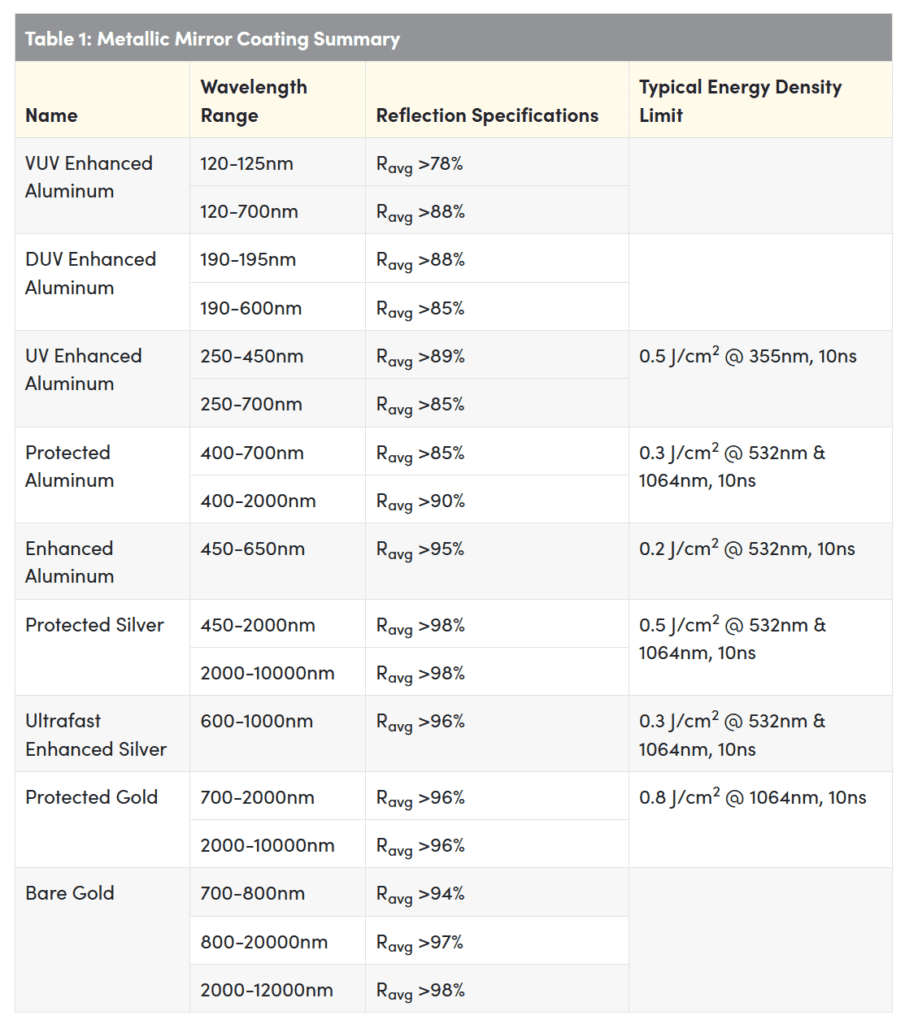
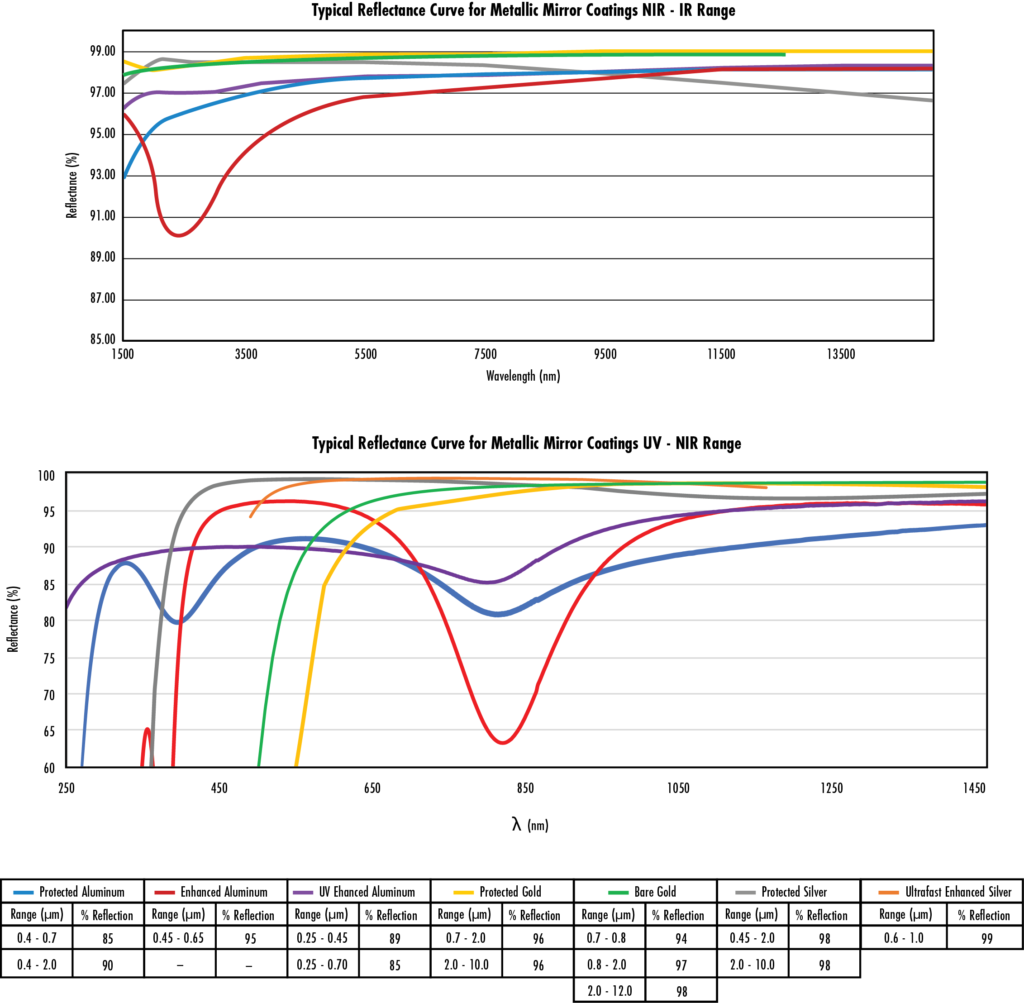
Custom Mirror Coatings
Notch Optics specializes in designing and manufacturing laser coatings for various optical components, including mirrors, beamsplitters, and windows. We collaborate with independent testing laboratories to certify our coatings’ resistance to laser damage, ensuring accurate and reliable specifications. All listed damage threshold values are based on multiple coating tests, with conservative figures; in practice, our mirrors often withstand 2-3 times the specified threshold.
We offer custom coatings tailored for single or multiple laser lines, as well as for broadband tunable laser sources. Our coatings are suitable for partial reflectors, output couplers, etalons, and can accommodate any angle of incidence or polarization state. Our world-class manufacturing facilities produce substrates with surface accuracies better than λ/20, surface quality of 10-5, parallelism under 0.5 arcseconds, and surface roughness below 5 Angstroms, using various glass and crystalline materials. We can also apply coatings to customer-supplied substrates for both prototype and production needs.
Considerations for High-Power Applications
For high-power applications, our coating designers select materials that exhibit low absorption at the relevant wavelengths. However, it is important to note that options for coating materials suitable for high-power use are somewhat limited. It’s advisable for system designers to consider appropriate damage thresholds during the initial optical design phase.
High-power ultraviolet (UV) laser coatings differ from those used in the visible and near-infrared (IR) regions, employing different materials. High-reflection coatings typically consist of alternating layers of high- and low-index materials, each a quarter-wavelength thick. The final coating structure can significantly influence the damage threshold. For example, adding a half-wave layer of low-index material, such as silicon dioxide (SiO2), as the top layer can substantially increase the damage threshold. Silicon dioxide is the standard choice for low-index layers, while various dielectric metal oxides are preferred for high-power UV, visible, and near-IR applications. Common high-index materials include oxides of titanium, tantalum, zirconium, hafnium, scandium, and niobium.
Coating Options
BBHR (Broadband High Reflective):
Provides an average reflectance of over 98% in the visible spectrum, ranging from 425-675nm, with angles of incidence from 0-45°.
NBHR (Notch Filter):
Achieves over 90% reflectance at the center wavelength (CWL), with a full width at half maximum (FWHM) less than 0.12 times the CWL, and average transmission greater than 90% for out-of-band wavelengths.
Custom coatings are available for wavelengths between 300-1800nm for BBHR coatings, and 350-850nm for notch filters.
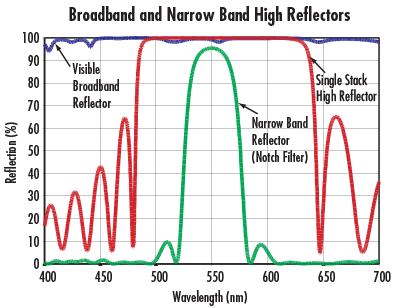
Single and Dual Laser Line Reflector
- Achieves maximum reflectance at one or two customer-selected wavelengths within the range of 190-3000nm for single-line reflectors or 350-1700nm for dual-line reflectors.
- Single Line Reflector: Reflectance exceeds 99.5% at the specified design wavelength.
- Dual Line Reflector: Reflectance exceeds 98.5% at both selected wavelengths.
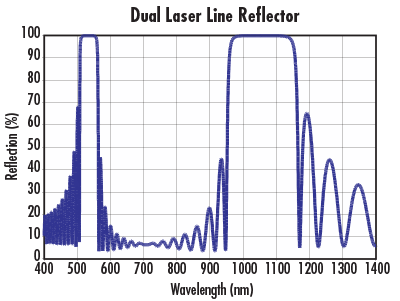
Laser Line Beamsplitter
- Offers partial reflectance ranging from 5% to 95%, customizable to meet specific customer requirements.
- Reflectance accuracy: specified as R% ±2%, with typical performance at R% ±1%.
- Available in 45° configurations, with both random and non-polarizing options.
- Designed for use across wavelengths from 250 to 3000nm.
